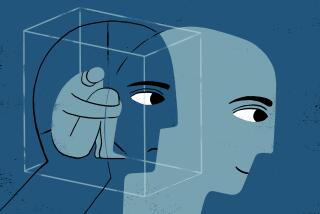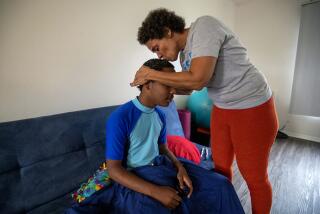Commentary : For Some, Help Isn’t Necessarily on the Way
- Share via
President George Bush promises a gentler, kinder nation, and Mayor Maureen O’Connor proclaims 1989 to be “The Year of the Child.” I wonder. I’m sure that a 14-year-old teen-ager I recently treated and her mother also have some doubts.
It was an extremely busy Sunday morning for this influenza season. I needed to take a break so I told my answering service to call me only for a true emergency. It would be nice to get away and go for a run.
Not more than 15 minutes later, I was paged. After a slightly profane (not profound) phrase, I went to a nearby friend’s house to make the call. It was from our urgent-care center.
What should we do with a 14-year-old adolescent runaway, obviously on drugs, with a history of being sexually molested, involved in child pornography, probably involved in some type of satanic cult and with no medical insurance. This was not quite a true emergency, but I could see why I got the call.
“I’ll be there within the hour,” I told them. “See if she will stay.”
Sure enough, this was going to be a problem. She wanted nothing to do with me. “I don’t want a male doctor,” she said. I could understand the request. I’m sure most of the men in her life haven’t been the best male role models.
She was obviously spaced out, hostile and made little to no eye contact. She just wanted to go home. When I talked to her mother, I was surprised by the caring attitude toward her daughter. She was frustrated. Her daughter had been off and on the streets for four months. The mother had attempted to obtain psychiatric help but was unsuccessful. “Could we help her and her daughter?” she asked.
Because I was unable to be sure what drugs this young girl had taken, I felt justified to hospitalize her. The staff at UC San Diego Medical Center was great. This young girl refused any type of examination by me. Luckily, the pediatric resident was female and was able to persuade her to allow an examination.
The girl’s mental status improved overnight. Her drug screen showed methamphetamine--an easily obtained, popular drug in San Diego. The resident pediatrician and I were impressed by this girl’s intelligence and potential. Both of us recognized that, behind this hostile attitude, there was a frightened child asking for help.
Since there was a history of sexual molestation, I was sure the county’s Child Protective Service would get involved. How wrong I was.
The social worker I spoke to said they were not interested in this type of case. This family had a previous investigation, and the case was closed. But what about the child pornography, and the running away behavior? “We don’t deal with runaways,” was the reply. OK, maybe I went to the wrong social service agency.
Certainly, this must fall into the county mental health arena. Wrong again. It was like deja vu. I got about the same exact reply, “We’re not interested in runaways.” I was told by the social worker that the success rate with such a patient was small, and therefore the county mental health facilities preferred to deal with acute psychiatric emergencies. “If she’s suicidal, or if she committed a crime we could take care of her” was one of the responses.
Facetiously, I asked whether it was appropriate for me to suggest that she rob a 7-Eleven, or attempt suicide so she could get help. What a Catch-22! No wonder her mother was frustrated. I’m a physician who knows how to manipulate the medical/psychiatric system, and I was running into a brick wall. How must this family have felt?
The county mental health social worker did say I should try to get her into some type of outpatient program. This meant, however, that I would have to send her back into an environment that she had felt compelled to run away from previously.
I realize that funding is limited for our social service agencies, and they are working beyond capacity. Unfortunately, runaway/throwaway children are not a priority in such a system.
Luckily, we were able to get Medi-Cal approval for hospitalization at a private mental facility. I’ve seen her four times. The change is dramatic. I now see an intelligent, witty, attractive, teen-age girl. She now feels comfortable enough to announce to the other adolescents at this facility, when I walked into the room recently, “There’s the guy I hate,” followed by a brisk smile.
I’m not naive enough to think that all of this girl’s problems will be solved by this small intervention, but I’m convinced this girl can make it. I don’t want her to become a part of the other 600,000 adolescent female prostitutes on the streets throughout the country. (There are also 300,000 adolescent male prostitutes.)
We see prostitution and child pornography as a problem. They see it as a solution. We see it as damaging to self-esteem, a threat to health from AIDS and other sexually transmitted diseases, and a threat to life from potential violence. To them it’s a “job,” a way to obtain “easy” money. It’s a meal ticket, a warm room. It’s a means of buying drugs.
I especially don’t want to read some day in our local newspapers that they found the body of a 14-year-old girl on some rural road in San Diego County.
In this year of the child, in this kinder, gentler nation of ours, where is the kindness? Where is the gentleness for a 14-year-old runaway, and where does she go for help?
More to Read
Sign up for Essential California
The most important California stories and recommendations in your inbox every morning.
You may occasionally receive promotional content from the Los Angeles Times.










